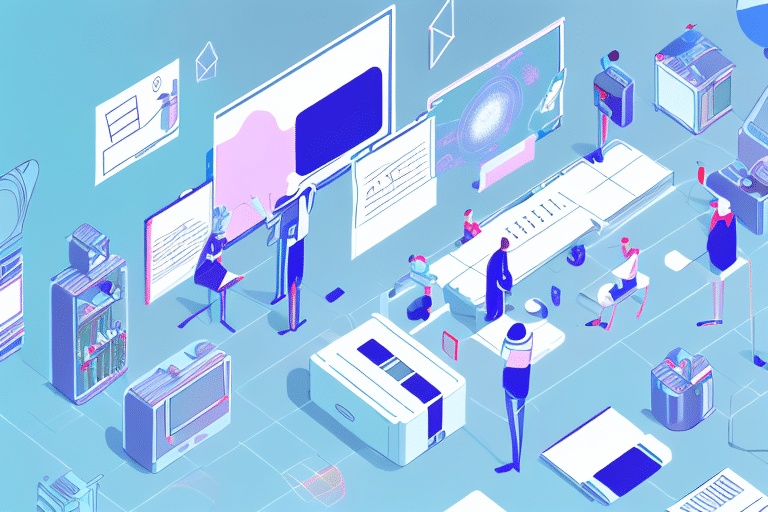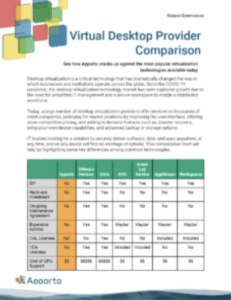The Role of Artificial Intelligence in Higher Education: Enhancing Learning and Administration
Artificial intelligence (AI) is rapidly transforming various sectors, and higher education is no exception. The infusion of AI in higher education is not only enhancing learning and teaching, but also revolutionizing the administration aspects of the education sector. Through the application of AI, universities and colleges can streamline the traditionally arduous and manual education processes, while simultaneously creating intelligent learning and research environments that adapt to unique student needs.
Understanding Artificial Intelligence in Higher Education
Artificial Intelligence (AI) has been a buzzword in various industries, including healthcare, finance, and transportation. However, the education sector has also embraced this technology to improve the learning experience of students. Before exploring the role of AI in higher education, it is essential to define what AI is and how it has evolved over time in the education sector.
Defining Artificial Intelligence
AI refers to the ability of machines to perform tasks that ordinarily require human intelligence, such as visual perception, recognition, decision-making, and language translation. AI involves the use of algorithms and statistical models to analyze and learn from data. This enables computers to make predictions, recommendations, and decisions without explicit instruction.
AI technology is divided into two categories: narrow or weak AI and general or strong AI. Narrow AI is designed to perform specific tasks, while general AI can perform any intellectual task that a human can do. Currently, the AI technology used in education is narrow AI.
The Evolution of AI in Education
The utilization of AI in education has come a long way since the introduction of computer-based instruction in the 1960s. Initially, AI was used to automate administrative tasks, such as grading and scheduling. However, with technological advancements, AI has become an integral part of the educational landscape. In recent years, the AI revolution in education has shifted from a focus on automating administrative tasks to personalized learning and tutoring systems.
AI has the potential to transform education by providing a more personalized and adaptive learning experience. AI can analyze vast amounts of data to identify patterns and provide insights that can help educators make informed decisions. Additionally, AI can provide students with personalized feedback, enabling them to improve their learning outcomes.
The Intersection of AI and Higher Education
Higher education institutions are increasingly leveraging AI to offer more personalized learning and research experiences. Through machine learning algorithms, AI can analyze large sets of student data, individualize the learning experience, and provide support that meets the unique needs of each student.
AI can also help institutions improve their operational efficiency by automating administrative tasks, such as scheduling and grading. This enables educators to focus on teaching and research, ultimately improving the quality of education.
Moreover, AI can facilitate research by analyzing vast amounts of data and identifying patterns that may not be visible to human researchers. This has the potential to accelerate scientific discoveries and improve our understanding of complex phenomena.
In conclusion, AI has the potential to transform higher education by providing a more personalized and adaptive learning experience, improving operational efficiency, and facilitating research. As AI technology continues to evolve, higher education institutions must embrace this technology to remain competitive and provide students with the best possible learning experience.
AI Applications in Learning and Teaching
AI technology in learning and teaching has opened up new possibilities beyond the traditional classroom setting. Incorporating these applications in higher education can improve efficiency, maximize student engagement, and individualize the learning experience.
Personalized Learning Experiences
AI algorithms can be used to analyze student data and provide customized learning experiences that meet individual learning requirements. Personalized learning systems use machine learning algorithms to analyze the educational background and abilities of each student. These systems’ data-driven approach enables teachers to create learning experiences that cater to each student’s strengths and needs.
For example, personalized learning systems can provide students with a tailored curriculum that reflects their interests and learning style. They can also suggest additional resources and learning materials that align with their interests and current level of understanding. This approach can help students to stay engaged and motivated, leading to better learning outcomes.
Intelligent Tutoring Systems
Intelligent tutoring systems (ITS) use AI to evaluate student responses and to provide real-time feedback. These systems are designed to mimic human tutors’ verbal and visual feedback to help students with complex problem-solving and decision-making.
ITS can provide students with personalized feedback that reflects their individual learning needs. For example, if a student is struggling to understand a concept, ITS can provide additional resources or suggest alternative approaches to help them grasp the material. This approach can help students to build their confidence and improve their understanding of complex subjects.
Adaptive Assessment and Feedback
Adaptive assessment and feedback systems use AI to provide tailored feedback on student progress. These systems adjust their questioning based on student responses, allowing for the provision of more detailed feedback. They provide a better understanding of each student’s strengths and weaknesses, enabling instructors to provide more targeted support and intervention.
For example, adaptive assessment and feedback systems can identify areas where a student is struggling and provide additional resources or support to help them improve. They can also provide real-time feedback on assignments, highlighting areas where the student needs to improve and suggesting ways to do so. This approach can help students to stay on track and improve their academic performance.
Collaborative Learning Environments
Collaborative learning environments are spaces that have been designed to foster group learning and teamwork. AI can facilitate distributed collaboration and improve peer feedback and group assessment.
For example, AI can be used to analyze group dynamics and identify areas where students may be struggling to work together effectively. This information can be used to provide targeted support and intervention to help the group work more effectively as a team. Additionally, AI can be used to provide real-time feedback on group projects, highlighting areas where the group needs to improve and suggesting ways to do so.
AI-Driven Curriculum Development
The development of curricula based on AI can enable institutions to identify knowledge gaps in the learning process. AI can analyze data from students, tracking trends of engagement, and performance, helping institutions to create curricula to improve student learning outcomes.
For example, AI can be used to analyze student performance data to identify areas where students are struggling to understand key concepts. This information can be used to develop targeted interventions and resources to help students improve their understanding of these concepts. Additionally, AI can be used to identify areas where students are excelling, allowing institutions to develop more advanced courses and learning materials to challenge these students.
AI in Higher Education Administration
Artificial Intelligence (AI) has become increasingly popular in recent years, and it has been adopted in various fields, including higher education administration. AI is a technology that can help educational institutions automate administrative functions, streamline operations, and improve efficiency. It can also enhance student support services by providing self-service options and automating administrative tasks.
Streamlining Admissions and Enrollment
The admissions process can be a time-consuming and daunting task for universities. However, AI technologies can be used to streamline and simplify the admissions process. By automating some of the selection process, universities can drastically reduce the time spent evaluating applicant credentials. This can lead to faster processing times, and universities can admit more students within a shorter period.
In addition, AI can help universities to identify the most suitable candidates for admission. By analyzing data from various sources, such as academic records, extracurricular activities, and personal statements, AI algorithms can identify students who are most likely to succeed in a particular program. This can help universities to admit students who are more likely to succeed, which can improve their graduation rates and reputation.
Automating Scheduling and Resource Allocation
Scheduling and resource allocation can be daunting tasks for educational institutions that have multiple departments and courses. However, AI can help to automate resources allocation and scheduling to reduce the load on staff members and make the process quicker and more efficient.
For example, AI algorithms can analyze data on student enrollment, course offerings, and faculty availability to create an optimized schedule. This can help universities to avoid scheduling conflicts and ensure that students can take the courses they need to graduate. Additionally, AI can help universities to allocate resources, such as classrooms and equipment, more efficiently, which can reduce costs and improve the quality of education.
Enhancing Student Support Services
AI allows institutions to provide support services such as chatbots to assist students in their journey. These services use natural language processing and machine learning to provide fast and accurate responses to student inquiries and troubleshooting. This can help to reduce the workload on staff members and ensure that students receive timely support when they need it.
Moreover, AI can also help universities to personalize their support services. By analyzing data on student behavior and preferences, AI algorithms can provide customized recommendations and advice to students. This can help students to make informed decisions about their education and improve their overall experience.
Data-Driven Decision Making
Data analysis through AI provides an abundance of knowledge and insights that can support decisions. Educational institutions can use this information for decision-making, including determining where additional resources are necessary. By analyzing data on student performance, enrollment trends, and faculty productivity, universities can identify areas that require improvement and make data-driven decisions to address them.
Furthermore, AI can help universities to predict future trends and make proactive decisions. For example, AI algorithms can analyze data on labor market trends and predict which programs are likely to be in high demand in the future. This can help universities to develop new programs that align with industry needs and prepare students for future job opportunities.
AI in Research and Grant Management
The application of AI in research and grant management can assist institutions in extracting the natural insights from big data sources. It also can automate the grant application process improving the accuracy and speed of grants approved. AI can help researchers to analyze large datasets, identify patterns, and make predictions. This can lead to new discoveries and insights that can advance knowledge in various fields.
Moreover, AI can help universities to manage grants more efficiently. By automating the grant application process, universities can reduce the workload on staff members and ensure that applications are processed more quickly and accurately. This can help universities to secure more funding and support research projects that can have a significant impact on society.
In conclusion, AI has the potential to revolutionize higher education administration. By automating administrative tasks, enhancing student support services, and enabling data-driven decision-making, AI can help universities to become more efficient, effective, and innovative.
Conclusion
In conclusion, AI is revolutionizing higher education in all aspects. From enhancing student learning and teacher effectiveness to streamlining administrative tasks, AI has the potential to positively impact education at all levels. As we continue to face ongoing changes in the education sector, we hope for AI to continue developing and providing more benefits to both students and institutions.



